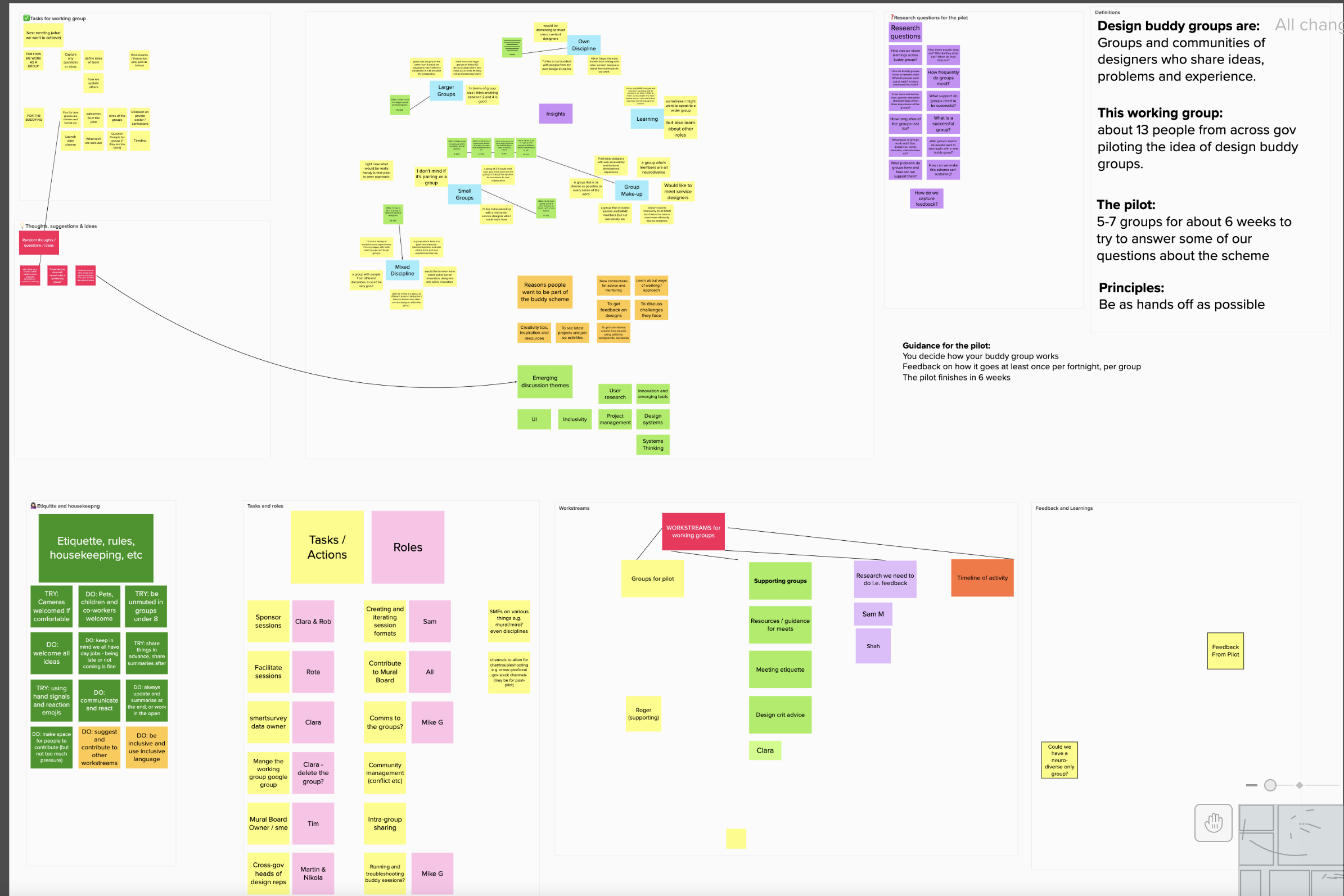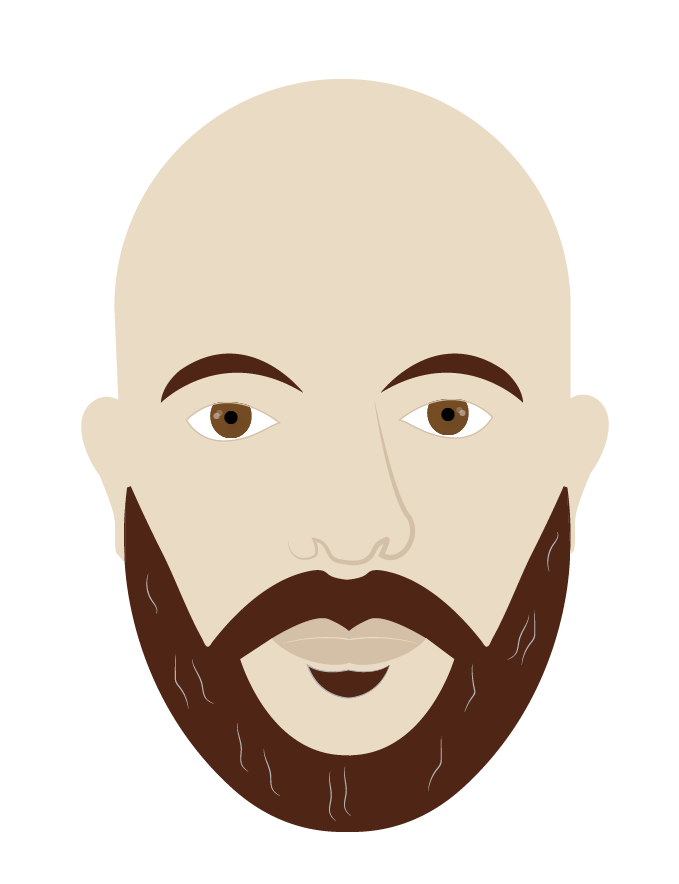Creating a Cross Gov Buddy group programme
The project
This idea followed on from working with a Senior Interaction Designer at GDS on the Cross Profession Crit programme.
The idea was to widen the exposure of designers to other design disciplines across Government. Something that I had quickly built up for myself whilst at the MoJ.
As someone who hugely values creating valued networks and relationships and wanting to help others develop I submitted a proposal to the acting Head of Design at the MoJ to initiate the programme.
My role
Coincidentally, someone at GDS had already had a similar idea and through networking across the Government Slack space I worked with a Service Designer at GDS to co-create the proposal document.
I worked as a joint lead on the project coordinating meetings to discuss the proposal and sign off on what the format of the Buddy Groups would look like.
Once the proposal had been agreed, I was responsible for establishing the working group that would support the large demand of participants.
Working as part of an agile team and establishing a working group
Although this work didn't strictly involve a delivery team per se, there was a great need to run the project in an agile way so that the working group could react to changes quickly. The working group is made up of:
- Interaction Designer
- Senior Service Designers
- Senior Interaction Designers
- Head of Design
- Digital Transformation Manager in Local Authority
- Senior Content Designer
The setup time that the programme required and the ongoing support was quite lengthy. I proposed that the working group should be empowered to rotate facilitating catchup sessions so that it wasn't the same people facilitating.
The problem
One of the problems that I identified was that cross Government communication on Slack can get archived. Also, there is always the same people commenting so the face of designers across Gov can become too familiar.
There was no way, other than building up networks and relationships personally, to gain access to other designers input on work or support in their career paths.
Working with GDS we created a expression of interest form to get an idea of who would want to participate in this programme and the numbers were overwhelming, so the problem was real.
-
Over 100
Number of designers across local and central Gov that wanted to participate in the first week
-
37
Number of designers volunteering to help and be part of the working group
-
28
Number of designers who took part in the 8 week pilot to help stress test the programme
My approach
Helping lead the working group
As we were running the pilot the working group needed to ensure that we met regulary to iterate on the programme to ensure it the groups that had been created were getting value from their sessions. If they weren't, they needed to be able to feed this back to the working group.
As part of the first working group session, a Mural board was setup to capture all tehe requirements of the group in order to understand what we needed to do to support the pilot groups.

Some of the feedback that came in from the survey helped us understand the types of groups that needed to be created.
Feedback 1I'd love a variety of disciplines and experiences. I'm very happy with both small groups and larger groups.
Feedback 2Doesn't need to necessarily be all BAME but it would be nice to meet more ethnically diverse designers
Feedback 3A group where there is a good mix of people, talents/disciplines and with others more and less experienced than me
This feedback was incredibly useful to create the pilot groups - these became:
- All content designers
- Mixed group of designers
- All designers of the same level
- Mixed level of designers
- BAME and women only
- Women only
The idea of the working group was to ensure it could run without needing either myself or the GDS Senior Service Designer, therefore I took a step back so that other members could facilitate the working group sessions.
What we have learned from the pilot
There’s a groundswell of interest in the design community for buddy groups and people are interested in different types of groups.
Everyone wants to meet people from other departments and organisations across government.
The most difficult part of getting a buddy group up and running is coordinating diaries. We’ve aimed to solve this by letting buddy groups self-organise and accepting that sometimes diaries just won't align.
Groups only need to exist for 6-8 weeks to be of value and the ideal group size is 4-5. That’s enough to include a range of people and experience but not too many that you don't get to hear from everyone. And if one or two people can't make it to a meeting, it's still of value.
We’ve also ensured that we have a support structure in place for safeguarding measures. We want members to feel comfortable in their groups but to know they can report any types of misconduct or inappropriate behaviour. Several members of the working group act as points of contact for any issues that might occur in the buddy groups.
Some of the main pieces of positive feedback from the pilot are:
- the groups have helped us create networks and meet people we wouldn't normally get to meet
- we like having access to peers to get feedback on work
- we’ve seen the beginning of a community of practice
What the future holds for the buddy groups
The 8 week pilot session has now ended. Following on from the initial success we’ve just launched the second round of buddy groups, connecting 52 amazing designers in central and local government.
This next round of groups will run for 8 weeks and we’ll be asking for feedback from members to find out if these groups are still adding value and what we can do to continue to improve.
